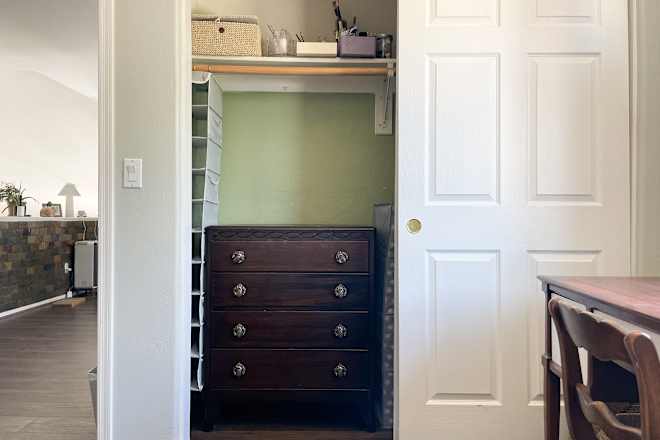NY Fed Q1 Report: Change in Household Debt Balances Mixed; Student Loan Delinquencies Rise Sharply
From the NY Fed: Change in Household Debt Balances Mixed; Student Loan Delinquencies Rise Sharply The Federal Reserve Bank of New York’s Center for Microeconomic Data today issued its Quarterly Report on Household Debt and Credit. The report shows total household debt increased by $167 billion (0.9%) in Q1 2025, to $18.20 trillion. The report is based on data from the New York Fed’s nationally representative Consumer Credit Panel. It includes a one-page summary of key takeaways and their supporting data points. The New York Fed also issued an accompanying Liberty Street Economics blog post examining student loan delinquency, including which borrowers were past due in the first quarter and implications for their access to other credit. “Transition rates into serious delinquency have leveled off for credit card and auto loans over the past year,” said Daniel Mangrum, Research Economist at the New York Fed. “However, the first batch of past due student loans were reported in the first quarter of 2025, resulting in a large jump in seriously delinquent borrowers.” Credit card balances fell by $29 billion from the previous quarter and stood at $1.18 trillion at the end of March 2025. Auto loan balances also declined by $13 billion, representing the second drop from one subsequent quarter since 2011, and totaled $1.64 trillion. Mortgage balances grew by $199 billion and stood at $12.80 trillion. HELOC balances rose by $6 billion to $402 billion, representing the twelfth consecutive quarterly increase. Student loan balances grew by $16 billion and now stand at $1.63 trillion. Other balances, which include retail cards and other consumer loans, fell by $12 billion. The pace of mortgage originations increased slightly, with $426 billion newly originated mortgages in Q1 2025. Aggregate limits on credit card accounts increased moderately by $77 billion, representing a 1.5% increase from the previous quarter. Aggregate delinquency rates increased from the previous quarter, with 4.3% of outstanding debt in some stage of delinquency. Transition into early delinquency held steady for nearly all debt types, with the exception of student loans. Student loans saw a large uptick in the rate at which balances went from current to delinquent due to the resumption of reporting of delinquent student loans on credit reports after a nearly five-year pause due to the pandemic. Transition into serious delinquency remained stable for auto loans, credit cards, and other debt.emphasis added Click on graph for larger image. Here are three graphs from the report: The first graph shows household debt increased in Q1. Household debt previously peaked in 2008 and bottomed in Q3 2013. Unlike following the great recession, there wasn't a decline in debt during the pandemic. From the NY Fed: Aggregate nominal household debt balances increased by $167 billion in the first quarter of 2025, a 0.9% rise from 2024Q4. Balances now stand at $18.20 trillion and have increased by $4.06 trillion since the end of 2019, just before the pandemic recession. The second graph shows the percent of debt in delinquency. The overall delinquency rate increased in Q1. From the NY Fed: Aggregate delinquency rates increased in the first quarter of 2025. As of the end of March, 4.3 percent of outstanding debt was in some stage of delinquency, up from 3.6 percent in the fourth quarter. Transition into early delinquency held steady for nearly all debt types; the exception was for student loans, which saw a large uptick in the rate at which balances went from current to delinquent due to the resumption of reporting of delinquent student loans on credit reports after a nearly 5-year pause due to the pandemic. Transition rates into serious delinquency, defined as 90 or more days past due, remained stable for auto loans and credit cards, and saw increases for mortgages, HELOCs, and student loans. The third graph shows Mortgage Originations by Credit Score. From the NY Fed: The volume of mortgage originations, measured as appearances of new mortgages on consumer credit reports and including both refinance and purchase originations, increased slightly with $426 billion newly originated in 2025Q1. ... Home equity lines of credit (HELOC) limits continued to rise and saw a $3 billion increase. There is much more in the report.

The Federal Reserve Bank of New York’s Center for Microeconomic Data today issued its Quarterly Report on Household Debt and Credit. The report shows total household debt increased by $167 billion (0.9%) in Q1 2025, to $18.20 trillion. The report is based on data from the New York Fed’s nationally representative Consumer Credit Panel. It includes a one-page summary of key takeaways and their supporting data points.
The New York Fed also issued an accompanying Liberty Street Economics blog post examining student loan delinquency, including which borrowers were past due in the first quarter and implications for their access to other credit.
“Transition rates into serious delinquency have leveled off for credit card and auto loans over the past year,” said Daniel Mangrum, Research Economist at the New York Fed. “However, the first batch of past due student loans were reported in the first quarter of 2025, resulting in a large jump in seriously delinquent borrowers.”
Credit card balances fell by $29 billion from the previous quarter and stood at $1.18 trillion at the end of March 2025. Auto loan balances also declined by $13 billion, representing the second drop from one subsequent quarter since 2011, and totaled $1.64 trillion. Mortgage balances grew by $199 billion and stood at $12.80 trillion. HELOC balances rose by $6 billion to $402 billion, representing the twelfth consecutive quarterly increase. Student loan balances grew by $16 billion and now stand at $1.63 trillion. Other balances, which include retail cards and other consumer loans, fell by $12 billion.
The pace of mortgage originations increased slightly, with $426 billion newly originated mortgages in Q1 2025. Aggregate limits on credit card accounts increased moderately by $77 billion, representing a 1.5% increase from the previous quarter.
Aggregate delinquency rates increased from the previous quarter, with 4.3% of outstanding debt in some stage of delinquency. Transition into early delinquency held steady for nearly all debt types, with the exception of student loans. Student loans saw a large uptick in the rate at which balances went from current to delinquent due to the resumption of reporting of delinquent student loans on credit reports after a nearly five-year pause due to the pandemic. Transition into serious delinquency remained stable for auto loans, credit cards, and other debt.
emphasis added
 Click on graph for larger image.
Click on graph for larger image.Here are three graphs from the report:
The first graph shows household debt increased in Q1. Household debt previously peaked in 2008 and bottomed in Q3 2013. Unlike following the great recession, there wasn't a decline in debt during the pandemic.
From the NY Fed:
Aggregate nominal household debt balances increased by $167 billion in the first quarter of 2025, a 0.9% rise from 2024Q4. Balances now stand at $18.20 trillion and have increased by $4.06 trillion since the end of 2019, just before the pandemic recession.
 The second graph shows the percent of debt in delinquency.
The second graph shows the percent of debt in delinquency.The overall delinquency rate increased in Q1. From the NY Fed:
Aggregate delinquency rates increased in the first quarter of 2025. As of the end of March, 4.3 percent of outstanding debt was in some stage of delinquency, up from 3.6 percent in the fourth quarter. Transition into early delinquency held steady for nearly all debt types; the exception was for student loans, which saw a large uptick in the rate at which balances went from current to delinquent due to the resumption of reporting of delinquent student loans on credit reports after a nearly 5-year pause due to the pandemic. Transition rates into serious delinquency, defined as 90 or more days past due, remained stable for auto loans and credit cards, and saw increases for mortgages, HELOCs, and student loans.
 The third graph shows Mortgage Originations by Credit Score.
The third graph shows Mortgage Originations by Credit Score.From the NY Fed:
The volume of mortgage originations, measured as appearances of new mortgages on consumer credit reports and including both refinance and purchase originations, increased slightly with $426 billion newly originated in 2025Q1. ... Home equity lines of credit (HELOC) limits continued to rise and saw a $3 billion increase.There is much more in the report.













































































